Easy Plant Styling for Low-Care Indoor Plants
You know that feeling when you walk into someone’s living room and something just… breathes? Not literally—though plants do that—but there’s this sense that the space is alive. The air feels softer. Your shoulders drop about two inches. And you think, “I want this.” Then you remember that fern you killed last winter, the one you forgot in your dark bathroom for three weeks, and suddenly you’re convinced you have the opposite of a green thumb. A black thumb? A plant-reaper thumb?

Here’s the thing: Most of us aren’t bad at keeping plants alive. We’ve just been listening to the wrong advice, trying to nurture drama-queen plants that demand perfect humidity and precisely-filtered morning sunlight. Meanwhile, there are these incredible, almost un-killable green warriors sitting in garden centers, just waiting to make your home feel like a sanctuary without requiring a botany degree or daily devotionals.
And honestly? That’s what most of us need right now. Life’s already complicated enough. Your plants shouldn’t be.
The Plants That Basically Raise Themselves
Pothos: The Trailblazer That Forgives Everything
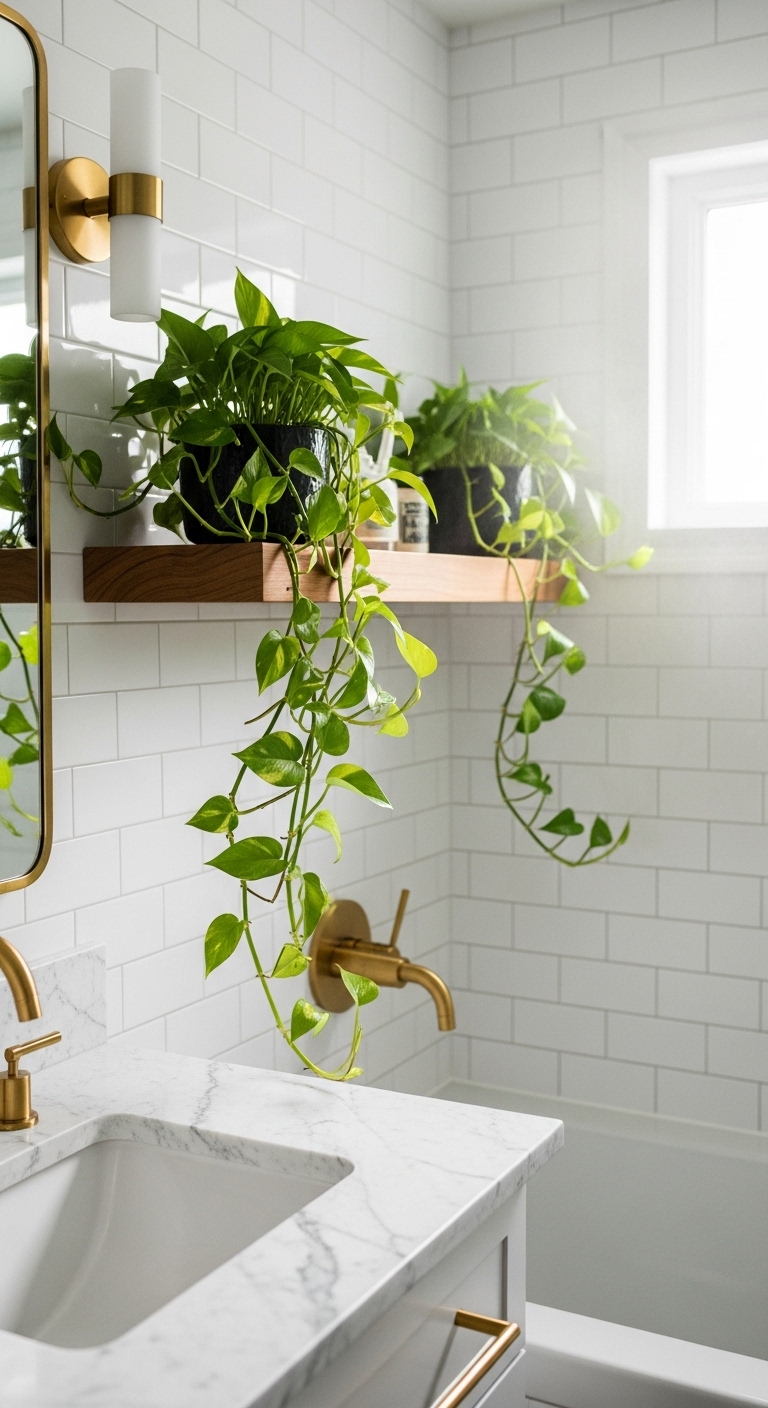
If plants had personality types, pothos would be that easygoing friend who shows up with pizza when you’re having a meltdown and doesn’t care that you’re still in yesterday’s sweats. This vine trails like a dream—long, cascading strands of heart-shaped leaves that make any bookshelf look intentional and any bare wall feel decorated.
But here’s what makes pothos the real MVP: it tells you exactly what it needs. Leaves looking droopy? Probably thirsty. Give it a drink and watch it perk up within hours like nothing happened. Leaves turning yellow? You’re probably loving it a little too much with the watering can. Back off. It’s not mad, just communicating.
I have a golden pothos that’s been with me through three apartments and one truly regrettable relationship. It sat in a north-facing window in my first studio, then survived six months in a windowless office under fluorescent lights (I brought it home on weekends for a light vacation), and now it lives in my bathroom where it gets occasional steam and inconsistent light. It’s fine. It’s better than fine—it’s thriving. That’s the kind of loyalty you want in a plant.
Snake Plant: The Architectural Statement That Needs Nothing
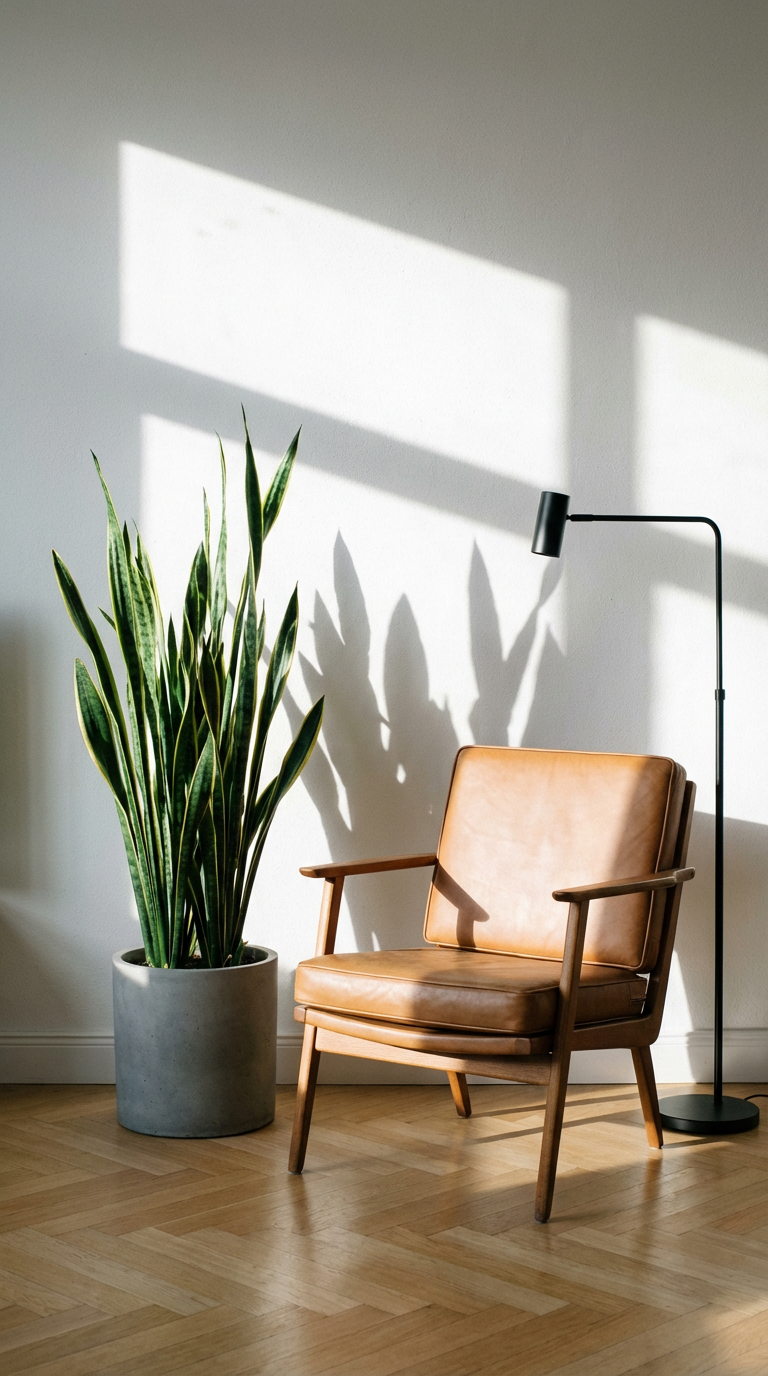
Okay, so snake plants look like they belong in a modern art museum, all sharp lines and sculptural presence. They stand up straight like green soldiers, and some varieties have these yellow edges that make them look intentionally designed. Which they are—by nature, I mean.
But here’s what nobody tells you: Snake plants are basically succulents in disguise. They store water in those thick, upright leaves, which means you can forget about them for weeks. Seriously. I once left mine for an entire month while I went to help my sister with her new baby, and I came back to find it looking… exactly the same. Maybe slightly taller? These things grow on their own mysterious timeline.
The other secret superpower? They handle low light like champions. That dark corner where your peace lily went to die? Snake plant territory. That awkward spot in your hallway with no windows? Snake plant doesn’t care. It’s photosynthesizing on its own terms, thank you very much.
ZZ Plant: The Glossy Green Machine
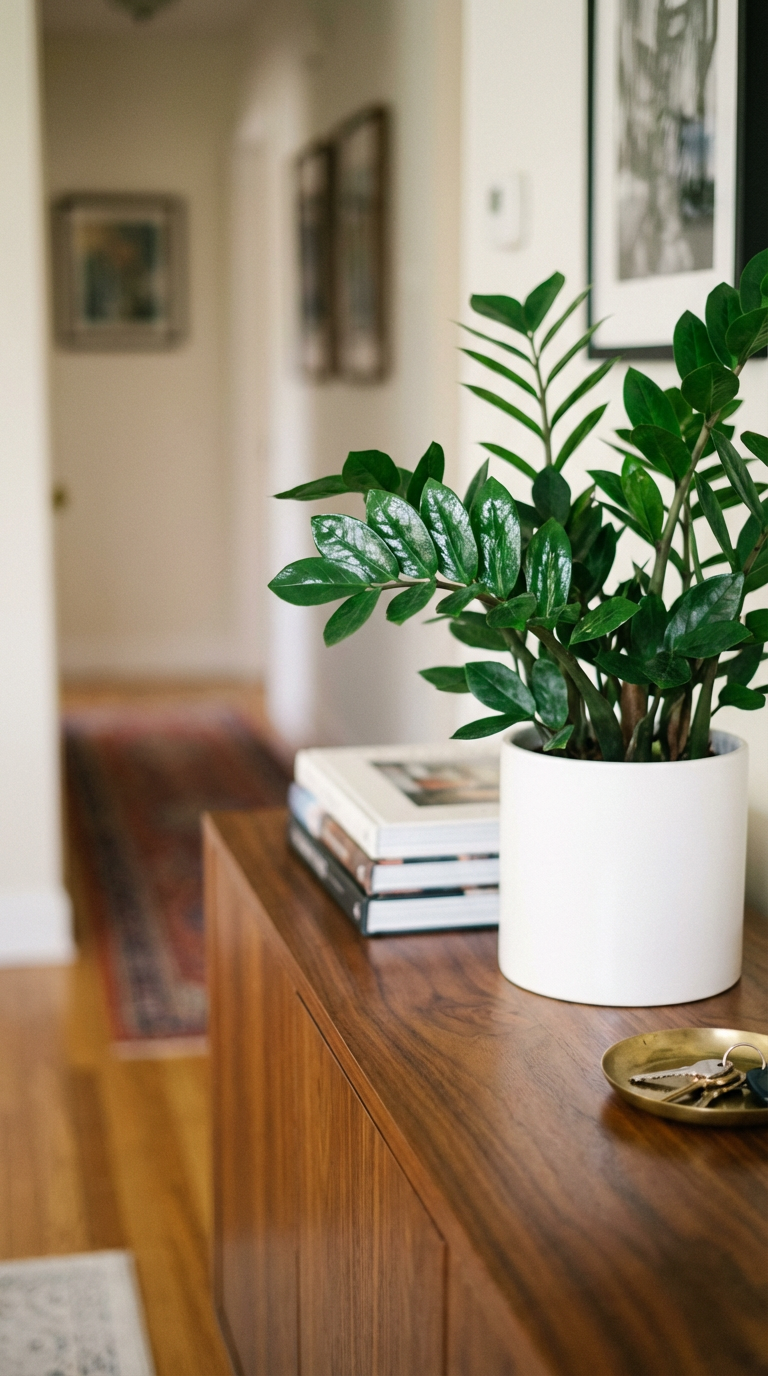
If you’re the kind of person who forgets plants exist until you bump into them, ZZ plant is your soulmate. It has these waxy, almost plastic-looking leaves that reflect light in a way that makes your space feel brighter, even when it’s not. The stems grow in this graceful, arching pattern that looks like you paid a stylist to arrange them.
But the real magic is in the rhizomes—those potato-like bulbs under the soil that store water like a camel’s hump. You could probably water this thing once a month and still be overdoing it. I tested this theory in my own living room (accidentally, if I’m being honest) and my ZZ plant didn’t just survive; it pushed out new growth like it was showing off.
And dust? ZZ plants seem to repel it somehow, but when they do get a little grimy, you just wipe the leaves with a damp cloth and they shine like you polished them. It’s almost unfair to the other plants.
Philodendron Varieties: The Shape-Shifters

Philodendrons are the chameleons of the plant world, and that’s what makes them so perfect for styling. The heartleaf philodendron trails like pothos but with this softer, more romantic vibe—leaves like green valentines on delicate vines. Then you’ve got the philodendron brasil with its streaky yellow variegation that looks hand-painted. And don’t even get me started on the philodendron micans, which has this velvety texture that makes you want to pet it (you should, it’s delightful).
Here’s what I love about philodendrons: They adapt to your life. Want it to trail six feet from your kitchen cabinets? It will. Want to keep it compact and bushy on your desk? Just trim it. They propagate in water faster than seems scientifically reasonable—snip a vine, stick it in a jar, and suddenly you have a new plant for your friend. It’s like they’re encouraging you to spread the green gospel.
The Pots and Stands That Actually Matter
Clay Pots: Not Just Rustic Vibes
Look, I know clay pots get romanticized in every plant Instagram post ever made. And yes, they do give you that earthy, Mediterranean-courtyard aesthetic that makes your apartment feel like a villa. But there’s actual science here, not just style.
Terracotta breathes. It’s porous, which means air gets to the roots and excess moisture evaporates instead of sitting there rotting your plant from below. For someone like me—who historically has loved plants to death with overwatering—this is a game-changer. The pot literally helps regulate itself.
But here’s the practical tip nobody shares: Buy the cheap ones and seal the inside with Thompson’s Water Seal if you’re worried about water stains on your floors. Or don’t, and embrace the patina. Those white mineral stains that build up on the outside? They’re character. They’re proof you’ve been caring for something. And if you really hate them, a quick scrub with vinegar water takes them right off.
Metal Stands: The Elevator Your Plants Need

Metal plant stands changed my entire relationship with my living room. Before them, my plants sat on the floor like forgotten gym bags. Now they’re at eye level, creating these vertical lines that draw your gaze up and make the ceiling seem higher. It’s interior design magic for like, thirty bucks.
I found these slim, black metal stands at a hardware store—nothing fancy, just three legs and a round tray at the top. But they let me put a snake plant in that weird corner behind my couch where the floor vent made direct placement impossible. The stand lifted it just enough for airflow, and suddenly that dead corner became a focal point.
The trick is to match the stand to your plant’s personality. Heavy, architectural snake plants need sturdy, geometric stands. Trailing pothos? A tall, delicate stand lets those vines cascade like a green waterfall. And honestly, if you’re short on floor space (aren’t we all?), stands let you create a plant corner without sacrificing square footage.
Slim Planters: The Space Saviors
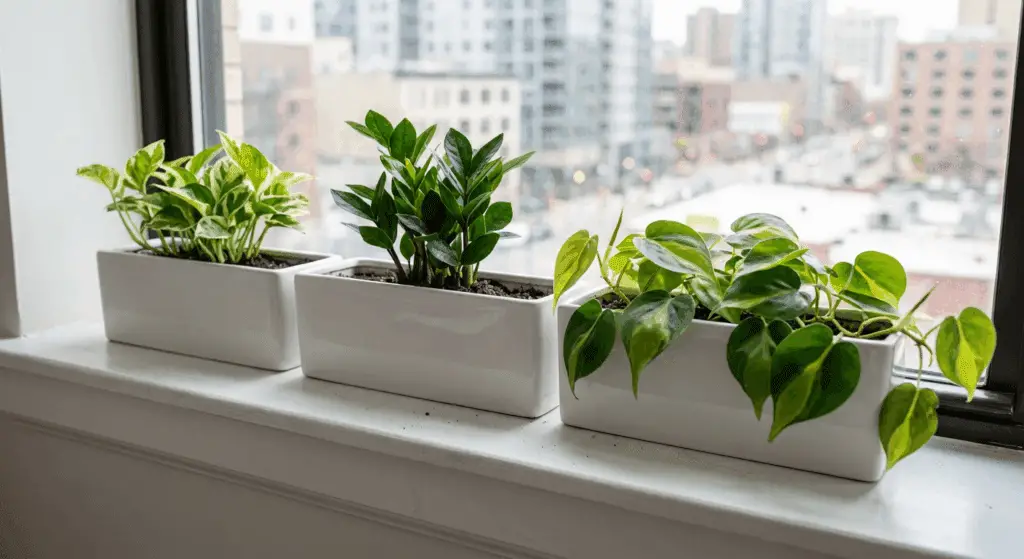
Here’s a scenario: You have a windowsill that’s four inches deep. Standard pots are six inches wide. Math problem? More like design opportunity.
Slim planters are the unsung heroes of urban gardening. They slide onto ledges, tuck into corners, line up on narrow shelves like little green soldiers. I have three slim planters on my kitchen windowsill—one with herbs (attempted, failed, replaced with pothos), one with a compact ZZ, and one with a brasil philodendron that trails down toward the sink.
The key is to look for planters that are at least six inches deep so the roots have room to breathe, but only four to five inches wide. They make your space feel lush without feeling cluttered. And they force you to be selective, which honestly makes your styling look more intentional. We’re going for curated, not chaotic.
Where to Put Them So They Actually Thrive
The Light Truth (It’s Not What You Think)
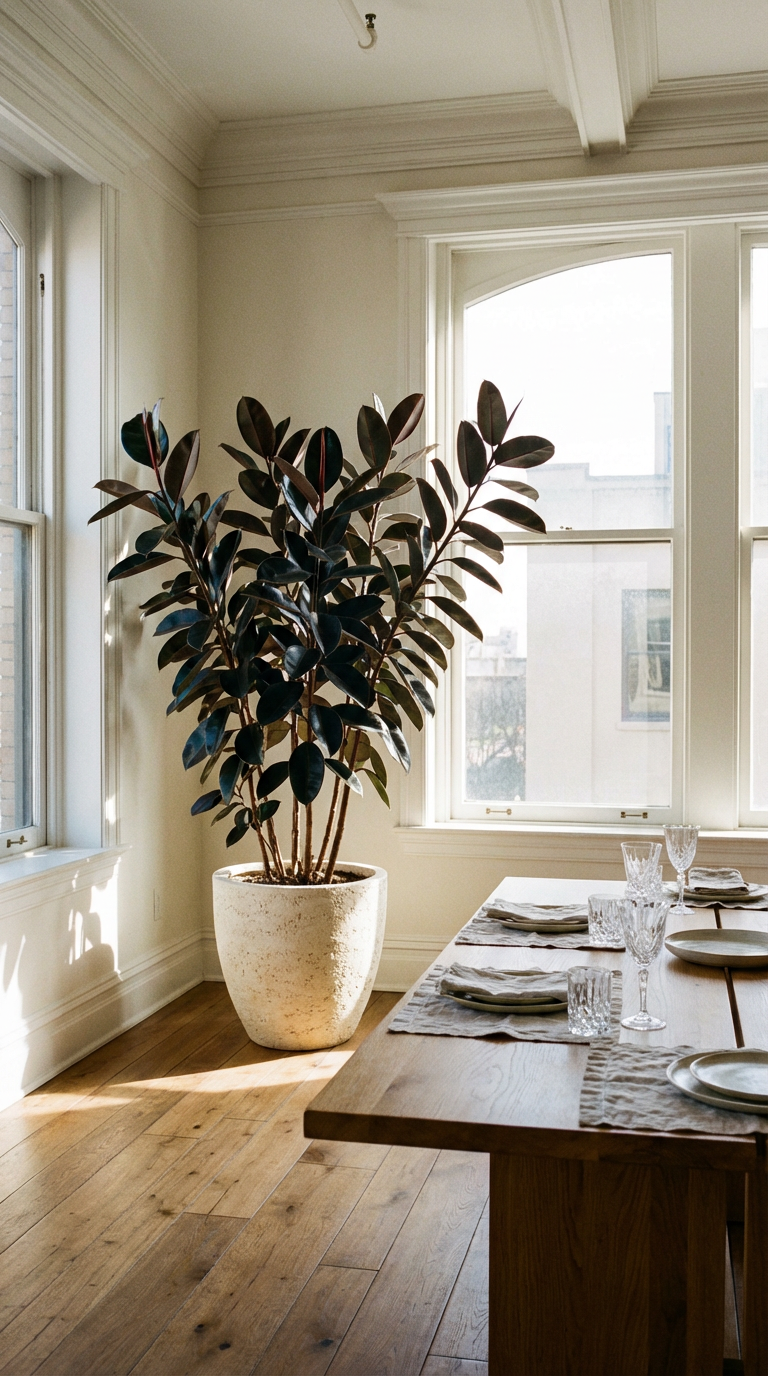
Everyone says “bright indirect light” like it’s some universal plant commandment, but what does that even mean? I’ve stood in my living room at noon, squinting at shadows, trying to determine if the light is “bright” or “indirect” or both. It’s exhausting.
Here’s what I’ve learned: Most low-care plants are way more flexible than the tags suggest. That spot three feet from a south-facing window? That’s bright indirect. The east-facing windowsill that gets morning sun for two hours? That’s perfect. That north-facing wall that never sees direct sun? Pothos doesn’t care. Snake plant definitely doesn’t care.
The trick is to watch your plants like they’re telling you a story. Leaves reaching toward the window like they’re trying to escape? They want more light. Leaves getting pale or scorched? Too much. It’s a conversation, not a formula. And honestly, moving a plant six inches can sometimes make all the difference. I call it “plant feng shui”—just scooting things around until they look happy.
Height Variation: The Layered Life

If all your plants sit on the floor, your room feels flat. If they’re all on the same shelf, it looks like a plant store, not a home. The secret is creating levels.
I started with a simple rule: one plant on the floor, one at knee height (like a coffee table), one at eye level (a stand or tall shelf), and one above eye level (hanging or top shelf). This creates this visual rhythm that makes your brain go, “Oh, this is intentional and beautiful,” instead of, “Oh, this person has a lot of plants.”
My favorite trick is putting a trailing plant up high so the vines cascade down at different lengths. I have a pothos on top of my bookshelf that reaches the floor now, and when the afternoon light hits it just right, it looks like a living chandelier. But then I balance that with a squat, sturdy snake plant on the floor anchoring the corner. Opposites attract, even in plant design.
Shelf Styling: The Controlled Chaos
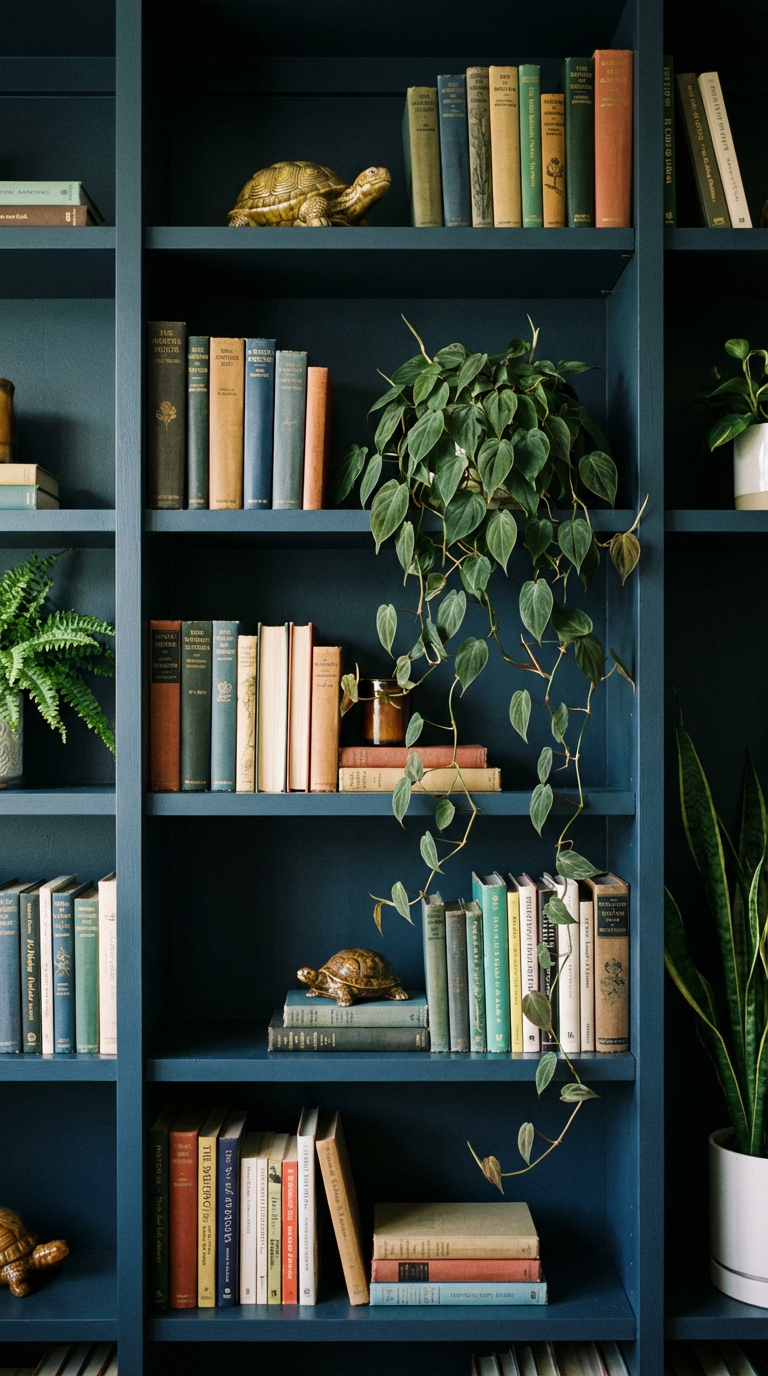
Shelves are where plant styling gets fun—and where most people panic. There’s this temptation to line up your plants like they’re in a police lineup: all facing forward, evenly spaced, looking terrified. Don’t do that.
Instead, think about creating little moments. Cluster three plants of varying heights on one side of the shelf, leaving the other side open for books or objects. Tuck a small philodendron behind a taller one so it peeks out. Let a pothos vine trail off the edge of one shelf and curl around the support bracket.
The rule I follow: If it looks too perfect, it probably is. Real life is a little messy. Your plants should be too. I have a shelf where I’ve got a ZZ plant in a matte black pot, a propagation station (fancy word for old jam jars with pothos cuttings), and a ceramic turtle I inherited from my grandma. It’s weird. It’s personal. It works.
Making It Work in Spaces That Aren’t “Plant-Friendly”
Hanging Planters: The Ceiling Is Your Friend

When floor space is nonexistent, look up. I mean literally—when was the last time you did something with your ceiling other than ignore it?
Hanging planters are like discovering a whole new room you didn’t know you had. I installed a simple hook in my bedroom ceiling (okay, my partner did it while I held the ladder and offered encouragement), and hung a macrame planter with a heartleaf philodendron. It sits right above my reading chair, and when I’m curled up with a book, those heart-shaped leaves frame my view like a living valance.
The key is to hang them at different heights. One at about six feet, so you don’t hit your head but it’s still in your sightline. Another maybe four feet from the ground, creating this green curtain effect. And don’t overthink the hardware—those simple ceiling hooks with toggle bolts hold more weight than you’d think. Just maybe avoid hanging a ten-pound ceramic pot full of soil directly over your bed. I’m not saying I’ve done that, but I’m not saying I haven’t.
Corner Greenery: The Forgotten Frontier
Every room has that corner. The one where furniture goes to die. It’s too small for a chair, too awkward for a table, and too dim for most plants. Except, plot twist: it’s perfect for the right plant.
Snake plants absolutely own corners. They grow upright, they don’t need much light, and they have this architectural quality that turns architectural dead space into a feature. I have a snake plant in a terracotta pot tucked into the corner where my hallway turns into my living room. It sits on a little wooden stool I found at a flea market, which lifts it just enough to catch some ambient light from the bathroom across the hall.
The stool is key—it adds height without committing to a full stand, and it creates this layered look that makes the corner feel intentional. Before the snake plant, that corner collected dust bunnies and abandoned shoes. Now it’s the first thing people notice when they walk in.
Narrow Stands: The Vertical Garden Hack
Here’s a scenario: You want a “plant corner” but you live in a studio apartment where the living room is also the bedroom is also the dining room. First of all, solidarity. Second, narrow plant stands are your secret weapon.
I found this five-tiered stand that’s only a foot wide but five feet tall. It fits perfectly between my window and the radiator (another plant no-no that we’ll work around). On the top tier, a small ZZ plant gets the most light. Second tier, a pothos trails down to the third tier. Fourth tier, a snake plant stands guard. Bottom tier, another pothos because honestly, why not?
The vertical arrangement creates this green tower that takes up barely any floor space but gives you the impact of a full garden. And because it forces you to arrange by height and light needs, your plants actually do better. It’s like they designed it that way or something.
The Care Routine That Doesn’t Feel Like a Chore
Watering Basics: The Finger Test Revolution
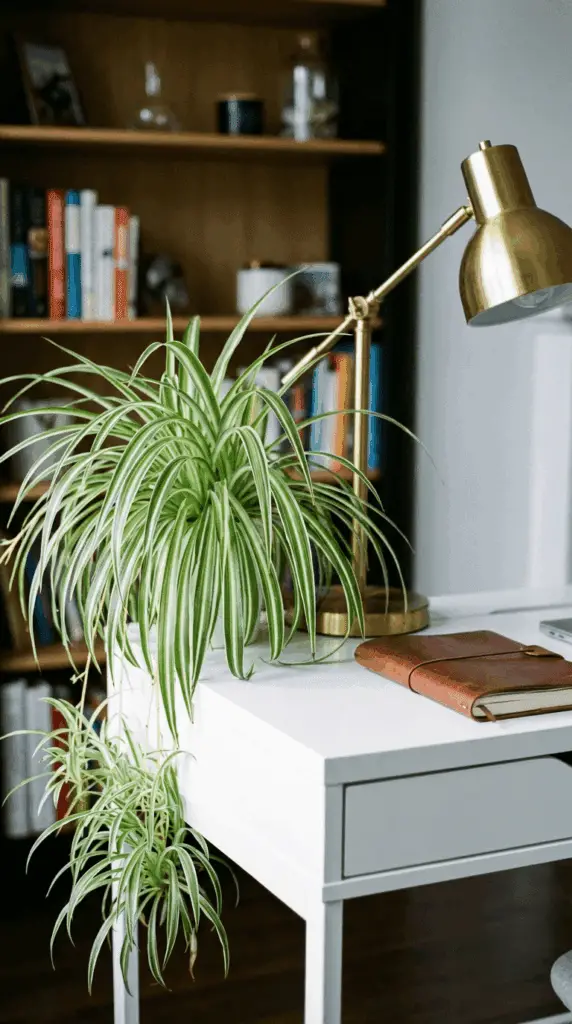
Somewhere along the line, someone decided plants needed watering schedules—every Tuesday and Friday, like they’re catching a bus. But plants don’t wear watches. They don’t care what day it is.
The only watering schedule you need is the finger test. Stick your finger in the soil up to your second knuckle. Feel moisture? Don’t water. Feel dry? Water thoroughly until it drains out the bottom. That’s it. That’s the whole secret.
I used to have a Wednesday watering reminder on my phone, and I followed it religiously, drowning plants that weren’t even thirsty. Now I just check in on Sundays while I’m watering my one high-maintenance plant (a peace lily that I’m honestly in a toxic relationship with). I finger-test the others, water what needs it, and ignore the rest. My plants are happier. I’m happier. The only casualty is my phone’s sense of purpose.
Light Monitoring: The Shadow Trick
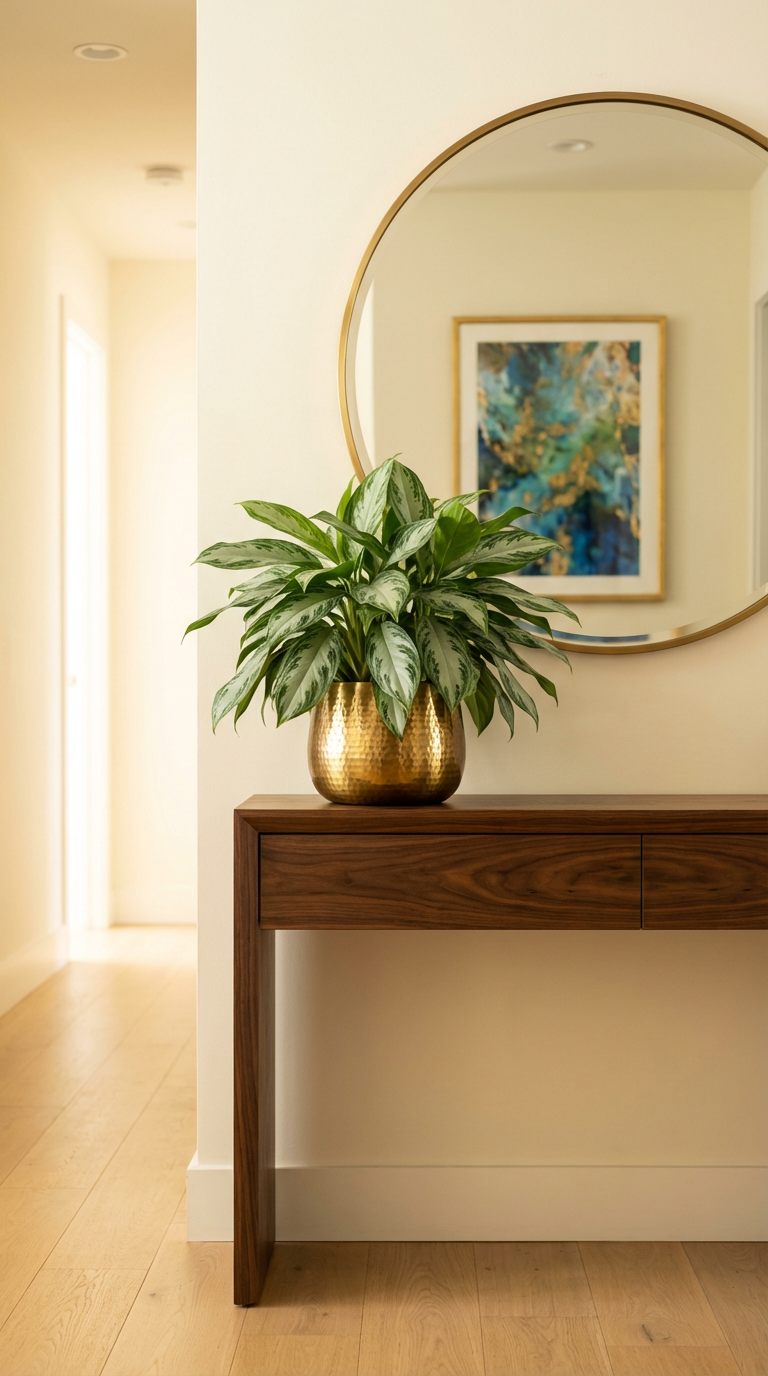
If you’re standing in your room at noon wondering “Is this bright indirect light or medium light or what,” do this: Hold your hand about a foot above where your plant would sit. Look at the shadow. Sharp, defined shadow? Bright light. Fuzzy, soft shadow? Medium light. Barely there shadow? Low light.
It’s not perfect, but it’s better than guessing. And honestly, most low-care plants will tell you if they’re unhappy. Reaching for light = needs more. Getting crispy = needs less. Plants are chatty if you know how to listen.
I move mine seasonally because my apartment’s light changes dramatically between summer and winter. My snake plant spends summer in the back corner and winter closer to the window. It’s like sending your plants to Florida for the cold months, except they don’t complain about the humidity.
Soil Refresh: The Lazy Person’s Repotting
Full disclosure: I hate repotting. It’s messy, it’s stressful, and I always end up with dirt in places dirt should never be. So I cheat with soil refreshes.
Once a year, maybe every two years if I’m being really honest, I gently pull the plant out of its pot, shake off the top inch or two of old soil, and replace it with fresh potting mix. I add some slow-release fertilizer pellets while I’m at it—those little green beads that promise to feed for six months. Then I put the plant back in the same pot.
Does it replace a full repot? No. Does it buy you another year of healthy growth without the trauma of wrestling a root ball? Absolutely. My ZZ plant has been in the same pot for three years, getting annual soil top-ups, and it’s pushed out three new stalks this spring. It’s fine. We’re fine. Everything is fine.
The Calm That Grows Itself
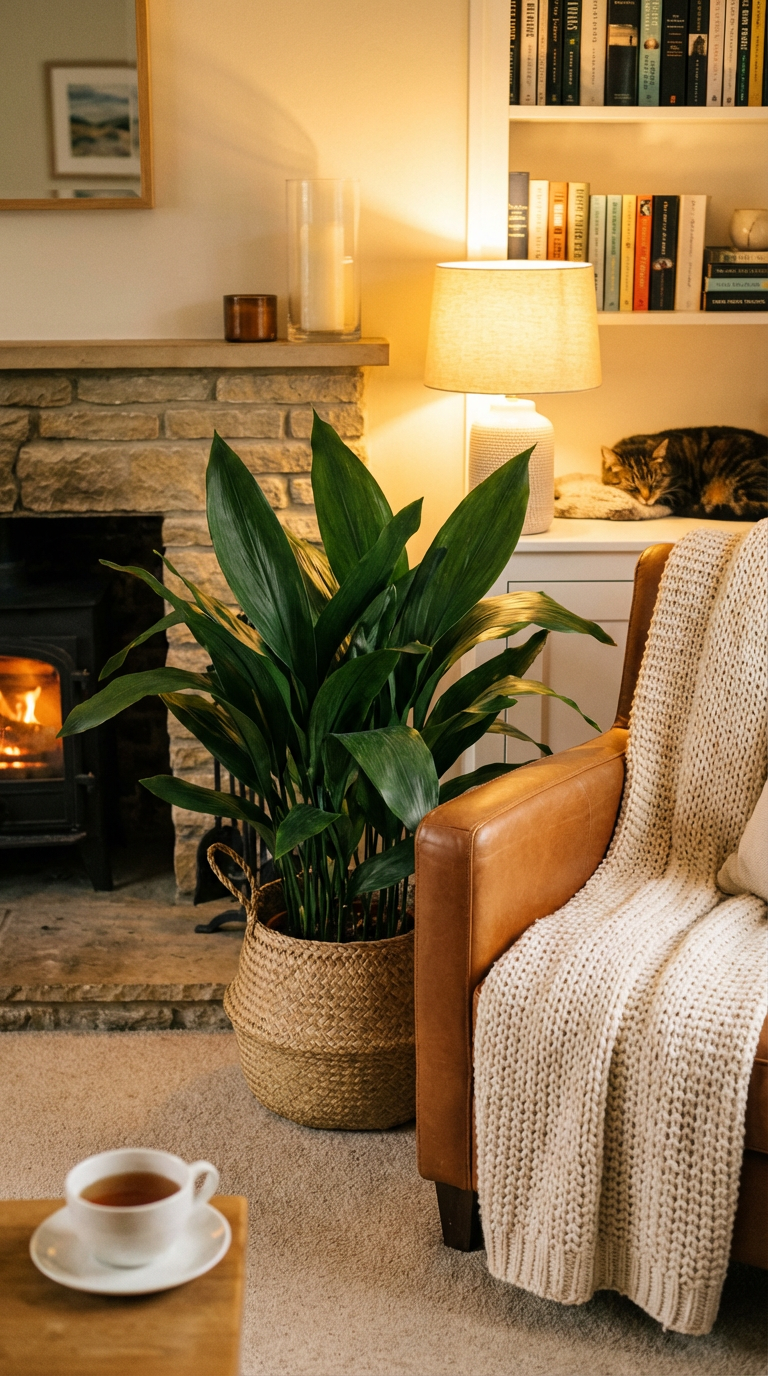
Here’s what nobody tells you about filling your home with low-care greenery: It stops being about the plants pretty quickly. Sure, you start because you want your space to look like those Instagram photos with the light streaming through monstera leaves. But you stay because of what happens to you.
You start noticing things. The way the afternoon light hits a pothos leaf and turns it translucent. The satisfying heft of a snake plant leaf between your fingers. The pride when you see a new unfurling frond that you didn’t kill with kindness. These tiny moments of connection in a world that’s increasingly disconnected.
And maybe it’s just me, but there’s something deeply calming about caring for something that doesn’t demand perfection. My snake plant doesn’t care if I didn’t answer that email. My pothos doesn’t judge my sink full of dishes. They just… exist. Quietly. Patiently. Making oxygen and beauty without any input from my anxious brain.
That’s the real styling tip, I think. Not the height variation or the perfect pot. It’s choosing plants that forgive your humanity, that thrive on neglect as much as attention, that turn your home into a place that feels alive even on the days when you don’t.
Start with one. A single pothos cutting in a jar of water on your windowsill. See how it feels. Watch it grow. Let it remind you that some things—most things, actually—don’t need your constant attention to be beautiful. They just need a little space, a little light, and the occasional drink.
And honestly? Don’t we all?
